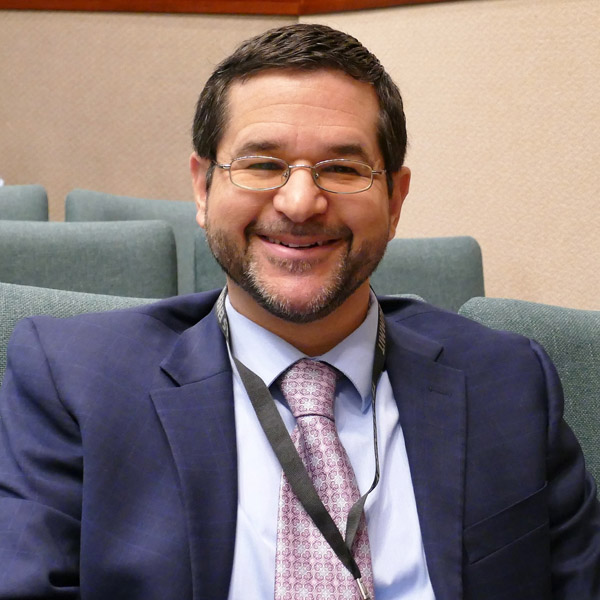The one-year anniversary of ERCOT’s near grid collapse during last February’s disastrous winter storm was marked by a glut of reports, webinars and opinion pieces recapping what went wrong and detailing the changes made to ensure it doesn’t happen again.
Connect the Texas grid to the rest of the country, said an energy institute. Because about 61% of Texan households now use electric heat, a group of academics determined that ERCOT’s grid is more susceptible to cold weather. Another university study posited that 100% clean energy and renewable energy would prevent blackouts.
One politician said Texas fixed its problems quickly because it isn’t connected to the national grid, while another wrote that Texas is on the right track. An energy fellow at the University of Houston blamed the problems on the energy-only ERCOT market, which places all the risk on the consumer.
The truth is out there. Somewhere.
Yes, the grid has survived three cold snaps and an arctic front, but none of them was as severe as last year’s winter storm. The lights and heat stayed on, but not before raising anxiety levels among Texans still suffering from PTSD.
 Alison Silverstein | Texas Tribune
Alison Silverstein | Texas Tribune
During one of her many recent webinar appearances, energy consultant Alison Silverstein didn’t wait for questions on the grid’s performance, asking them of herself. She said the grid is in better shape than last year with “lots more to do” but that ERCOT’s performance during these latest cold-weather events are not proof that everything is fixed. (See ERCOT Breezes Through Latest Winter Storm.)
“Absolutely no,” Silverstein said during a panel discussion last month set up by Advanced Power Alliance. Last month’s weather “was not enough of a stress test to really show that the grid is better.”
ERCOT’s regulator, the Public Utility Commission of Texas, has made several major changes, directed by the numerous power-related bills lawmakers passed last year. Power plants have been ordered to winterize, with ERCOT conducting inspections and the PUC penalizing those that have failed to comply.
The commission has also lowered the price cap from $9,000/MWh to $5,000/MWh; the previous commission set prices at the old cap for four days during last year’s storm, resulting in $45 billion in market transactions that week and several bankrupt participants. Ancillary service prices have also been limited after last year, part of several tweaks around the edges in what is called Phase 1 of the market improvements.
At the PUC’s prodding, ERCOT has been practicing a “conservative” approach to operations, calling on more reserves more quickly and increasing the number of reliability unit commitments (RUCs). London Economics said in a recent study that 96% of the RUCs last year were to maintain additional online reserves and not for resolving local issues.
“That is a good thing in terms of having more resources ready to operate, but we’re also paying a bundle to make that happen, and we haven’t had any public accounting of that those costs yet,” Silverstein said.
Partnering with the Texas Consumer Association, Silverstein filed a petition with the PUC asking it to direct ERCOT to calculate the costs spent on grid reliability. The filing says the reliability costs, along with a 36% increase in natural gas prices from April 2020 to February 2022 and new charges for securitizing generator and retail electric providers’ losses during the storm, “are being passed through higher electric bills” to the 27 million individuals the grid operator serves.
“The rough information available in the PUCT proceedings to date suggest that costs could exceed several billion dollars for past [Winter Storm] Uri costs (which will not improve future reliability) and at least another billion for recent reliability improvements,” Silverstein wrote.
During a one-on-one interview with PUC Chair Peter Lake as part of a weeklong virtual symposium, “The Winter Storm, One Year Later,” Texas Tribune CEO Evan Smith said he had been told ERCOT had spent $25 million procuring reserves during one day of the arctic front and as much as $500 million since the middle of last year.
Asked to confirm the numbers, Lake deferred to ERCOT.
“I don’t know the numbers off the top of my head, but yes, more reliability costs more … and we know we need more reliable power in Texas,” Lake said.
 Doug Lewin, Stoic Energy | © RTO Insider LLC
Doug Lewin, Stoic Energy | © RTO Insider LLC
Stoic Energy President Doug Lewin harkened back to ERCOT CEO Brad Jones’ September testimony to the state Senate Business and Commerce Committee. Asked about the RUC costs, Jones estimated that they were $40 million/month during the summer.
“That’s a lot of money for consumers to shoulder, potentially a 5 to 10% surcharge on top of already higher bills,” Lewin said. “These numbers are rough estimates. I’d love to replace them with more accurate figures, but we need transparency from ERCOT and the PUC on these costs.”
Lewin estimated $1 billion in additional reliability costs, assuming ancillary service costs have gone up two or three times from 2020’s $381.5 million bill and $50 million in monthly costs since the summer.
On Tuesday, Jones told RTO Insider that those numbers are way off. He pointed out that the $40 million was the cost during summer months for all ancillary services and said that ancillary costs were $270 million from last summer through early February.
“To put that into context, that’s less than $1 a customer per month, on average,” Jones said.
He said staff assumed 380 million MWh of energy production in ERCOT, with the average consumer using about 1 MWh/month in deriving the figure, with RUC costs being “shockingly low.”
ERCOT’s annual RUC report shows there were 3,853.1 effective RUC resource-hours in 2021, up from 220.1 in 2020. Total RUC make-whole payments were about $5.3 million last year and were covered through capacity short charges, staff said, with about $3.1 million in excess profits clawed back from generators. In 2020, those numbers were about $404,000 and $484,000, respectively. (See “RUC Usage Skyrockets,” ERCOT Technical Advisory Committee Briefs: Jan. 31, 2022.)
“These actions have also moved us significantly toward a capacity market since these are mostly out-of-market capacity payments,” Lewin said. “Whatever you think about capacity markets, those decisions should be made with transparency, not by opaque regulatory changes.”




